Content
- Classifications
- Aminoglycoside
- Macrolide
- Chloramphenicol
- Hormonal
- Lincosamide
- The best drugs from the pharmacy
- "Levomekol"
- "Baneocin"
- "Tetracycline"
- Betadine
- "Gentamicin"
- "Bactroban"
- Antibiotic ointment video
Antibacterial drugs used in various fields of medicine. In the presence of skin lesions, diseases, ointments with a broad-spectrum antibiotic are used. They act on many types of bacteria and fungi. They stop their reproduction, destroy. The advantages of ointments - do not affect the intestinal microflora, can be applied directly to the affected areas.
Classifications
There are several classifications of antibiotics. Bactericidal act directly on the microorganism itself, destroying its walls, which leads to death. They act quickly, the treatment lasts 5-10 days. Bacteriostatic act as an adjuvant, stop the growth of bacteria. The remaining weakened microorganisms are destroyed by the immune system.
Classification by chemical structure, impact efficiency:
- Penicillins (Oxacillin, Ampicillin, Amoxicillin) are among the main antibiotics. These are bactericidal drugs that kill most types of bacteria.
- Cephalosporins (Cefpirom, Cefepim, Ceftriaxone) are prescribed if the patient has a contraindication to penicillins or they are ineffective. Both groups are similar in action.
- Fluorochonolones ("Levofloxacin", "Ciprofloxacin", "Ofloxacin") do not have a natural analogue, they are synthetic drugs with a bactericidal effect.
- Tetracyclines (Doxycycline, Metacyclin, Tetracycline). These are bacteriostatics that act on many types of pathogenic microorganisms. They are used for severe, severe skin lesions. The course of treatment should be short; with prolonged exposure, they are toxic.
- Aminoglycosides ("Amikacin", "Gentamicin", "Streptomycin"). These are bactericidal drugs that are used for severe diseases. But they are highly toxic, therefore they are prescribed in short courses, with caution.
- Levomycetins are bacteriostatics, they are prescribed less often than other drugs.
- Actinomycins. They are prescribed to treat tumors.
- Macrolides (Clarithromycin, Erythromycin). These are drugs with bacteriostatic, mild effect, low toxicity.
- Antifungals (for example, "Nystatin") destroy the walls of microorganisms.
Broad-spectrum antibiotic ointment is used to solve many dermatological problems. It works equally well against gram-positive and negative bacteria. Depending on the purpose, antibiotics are divided into 3 groups that act on bacteria, fungi and similar microorganisms that affect the life of protozoa.
Aminoglycoside
In the group of natural ointments with a broad-spectrum antibiotic - more than 10 varieties, synthetic - more than 20. The drugs disrupt the synthesis of proteins, the circular DNA molecule of the bacterium.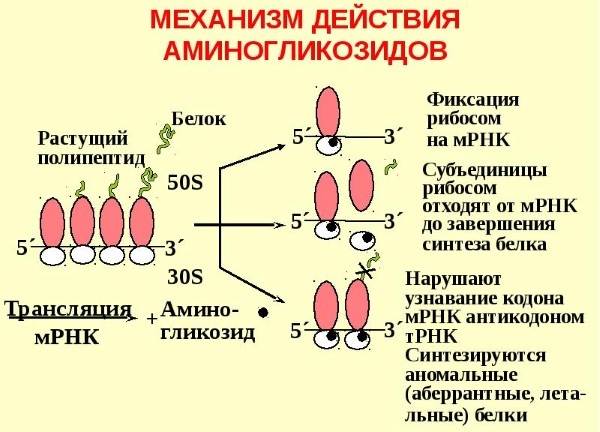
Aminoclycoside ointments:
| Name | Action |
| "Neomycin" | These are first generation drugs. They penetrate the membrane, inhibit the synthesis of protein molecules. They are used for burns, frostbite 1 and 2 degrees. They are also effective for:
The drug should not be used for trophic ulcers with a large lesion area. |
| "Gentamicin" | It is a bactericidal, bacteriostatic drug. It affects most gram-positive and negative microorganisms. But it is useless for viruses, fungi, anaerobic bacteria. It is used for:
During prolonged use, pathogens develop immunity to the components. |
Macrolide
Macrolide preparations can be natural and semi-synthetic.
They are classified according to the number of carbon atoms:
- 14 - natural preparations based on oleandomycin and erythromycin, semi-synthetic - with clarithromycin and roxithromycin;
- 15 - semisynthetic ointments based on azithromycin;
- 16 - semi-synthetic preparations with acetate, natural - with midecamycin, josamycin, spiramycin.
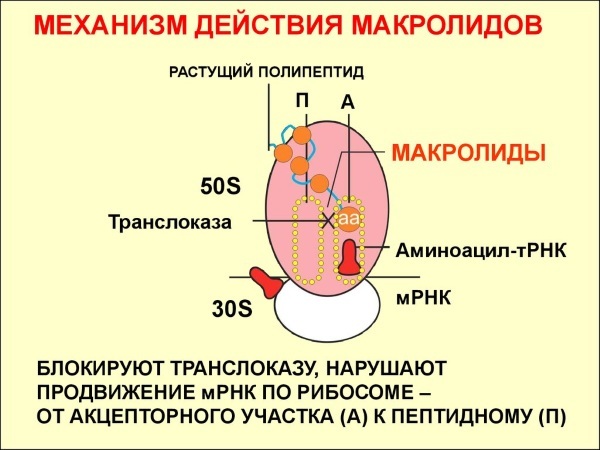
Macrolide antibiotics are added to the composition of erythromycin ointment. It is used for acne, bedsores, for the treatment of wounds, burns of 1 and 2 degrees.
Chloramphenicol
These are broad spectrum drugs that target a large group of diverse bacteria. Ointments are used to treat inflammation, burns, trophic ulcers, bedsores.
Levomycetin-based antibiotics:
| Name | Action |
| "Iruksol" | Cleans wounds, promotes granulation, prevents the development of infection. Eliminates infection, accelerates tissue regeneration. Indications:
Contraindications - blood diseases, allergy to the composition. |
| "Levomekol" | Destroys pathogenic bacteria, prevents the accumulation of pus, stops the inflammatory process. Stimulates cell regeneration, strengthens the protective properties of the skin. |
| "Corticomycetin" | It is a combination of hydrocortisone (a glucocorticosteroid) with chloramphenicol (an antibiotic). Applied with:
Contraindications - open wounds, neoplasms, acne vulgaris. Not used for viral, fungal, tuberculous and yeast skin lesions. |
| Levosin | A combined preparation consisting of an antibiotic with antimicrobial agents. Prevents the growth of bacteria, relieves pain, removes inflammation. The composition contains methyluracil, which increases local immunity, stimulates cell regeneration. |
| Fulevil | Combined drying agent that regenerates the skin and increases its protective properties. Prescribed for purulent wounds, bedsores, burns. Used to treat purulent, weeping wounds that do not heal for a long time. |
Hormonal
Hormonal drugs are prescribed only in short courses, but they are highly effective. At the same time, they help to cope with skin inflammation. The hormonal ointments contain a glucocorticoid. There are combined formulations.
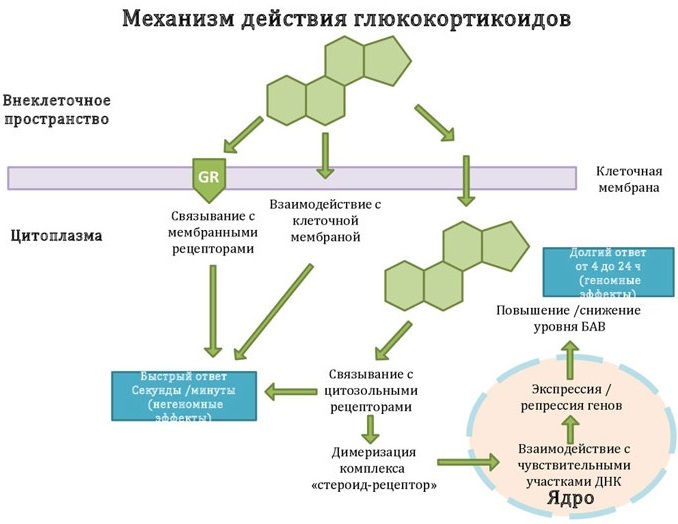
Hormonal ointments:
| Name | Action |
| "Triderm" | It is an antibacterial, antifungal agent. Due to gentamicin, a bactericidal effect is manifested. Therefore, it is used for bacterial skin lesions, for the treatment of dermatitis, chronic lichen simplex, eczema. There are contraindications in the form of herpes, chickenpox, cutaneous tuberculosis and application at the site of syphilis. Use with caution in the presence of wounds, during pregnancy. |
| Ekolom | The drug is used for inflammation, itching with dermatoses, which can be treated with external agents. But Ekolom has a long list of contraindications. |
| "Celestoderm" | It contains gentamicin. It is prescribed for the treatment of oily and damp skin, with a secondary infection, contact dermatitis, neurodermatitis. Other indications:
But the drug has many contraindications. |
| "Advantan" | Quickly relieves inflammation, allergic manifestations. The ointment is prescribed for the treatment of dermatitis, neurodermatitis, eczema. With repeated application, it does not cause health problems or side effects. Contraindications - skin tuberculosis, manifestations of syphilis, chickenpox and herpes zoster. |
These are antibiotics of natural origin. The same group includes the semi-synthetic "Clindamycin". The drugs stop the reproduction of pathogenic microorganisms. Depending on the dosage, they can be destroyed. They are used as part of complex therapy, as second-line medicines.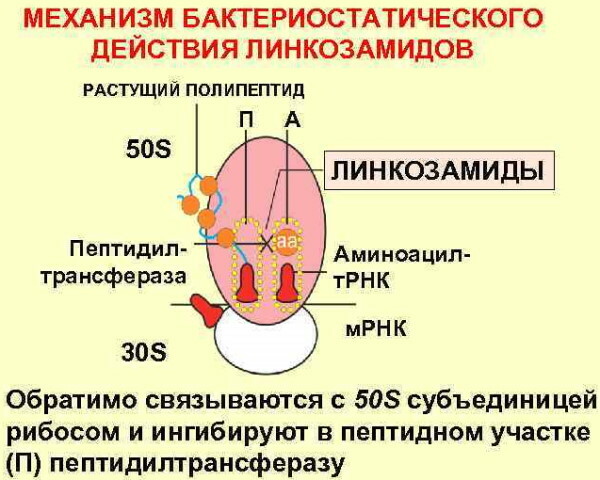
| Name | Action |
| "Klindes" | The mechanism of action is a violation of protein synthesis within cells. The drug acts as a bacteriostatic for many microorganisms, destroys bacterial strains. |
| Lincomycin-AKOS | Suppresses protein synthesis at the cellular level. In low dosages it acts as a bacteriostatic, in high dosages it has a bactericidal effect. Many gram-negative organisms, viruses, fungi are resistant to it. But this addiction develops slowly. Indications - purulent-inflammatory pathologies of the skin, soft tissues. Use with caution in fungal diseases, myasthenia gravis. Contraindications - severe hepatic or renal failure. |
| "Clindamycin" | The ointment contains the antibiotic clindamycin, which successfully copes with fungal diseases, acne. It is a broad-spectrum bacteriostatic. An external agent is used to treat bacterial vaginosis. |
| Clindacin Prolong | It is an antifungal and antibacterial drug used in gynecology. Indications - vaginitis, bacterial vaginosis. |
In case of damage to the mucous membranes of the mouth (wounds, ulcers), the drug "Metrogyl Denta" with an antibiotic and chlorhexidine is prescribed. They have an antibacterial and analgesic effect, relieve inflammation, and prevent its development.
Also, for the healing of mucous membranes, Levomekol, Lincomycin, Tetracycline or Gentamicin ointment can be prescribed. The composition of "Oflomelid" includes two active components at once - ofloxacin and methyluracin.
The best drugs from the pharmacy
A broad-spectrum antibiotic ointment is applied 1-3 times / day, depending on the disease or problem. For burns and wounds - 1-2 mm thick. For dermatological diseases, skin inflammation, ointments are used 2-3 times a day, applied to the affected fate. With inflammation of the mucous membranes, the ointment is placed under the eyelids. The course of treatment is a week.
"Levomekol"
Ointment with a broad-spectrum antibiotic "Levomekol" is considered one of the best. It is produced in the form of a creamy substance of white color with a yellowish tint, packaged in tubes or glass dark jars. The main active ingredients are the antibiotic chloramphenicol, a tissue regeneration stimulator.
The drug affects most gram-positive and negative bacteria. Penetrates through cell membranes into tissues, ensuring their rapid regeneration. Eliminates inflammation, draws out pus.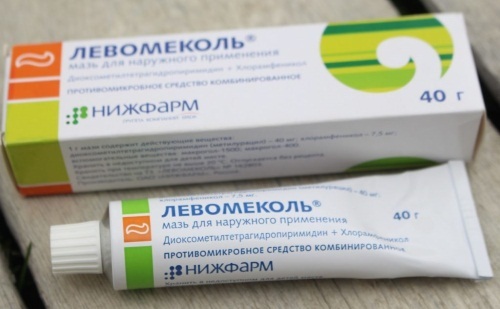
The ointment is applied to a gauze napkin, applied to the affected area. Fix with a plaster, change daily. Or warm ointment is injected into the purulent cavity through the drainage tube. Apply on corns with an interval of 2-3 hours, flagella are installed in the nostrils for 10-12 hours.
For dental diseases, rub into the affected areas 2-3 times / day. During gynecological diseases, balanoposthitis ointment is used three times a day. The course of treatment is 4-7 days, depending on the degree of damage.
Indications for use:
- purulent wounds at the onset of inflammation;
- bedsores;
- boils;
- corns;
- herpes;
- haemorrhoids;
- ulcers;
- purulent acne;
- inflammation of the lymph nodes;
- sinusitis with the addition of a bacterial infection;
- periodontal disease;
- trophic ulcers;
- stomatitis;
- colpitis;
- tears after childbirth;
- balanoposthitis, balanitis.
Contraindications - eczema, fungal skin lesions, psoriasis, intolerance to the active components of the drug. Possible side effects are allergic manifestations (itching, burning, urticaria), dermatitis, soft tissue edema, hyperemia. In case of an overdose, this symptomatology increases.
In pharmacies it is sold without a prescription, the price is 100-140 rubles.
"Baneocin"
Produced in the form of a yellow ointment. The main active substances are antibiotics neomycin, bacitracin, among the auxiliary ones are paraffin, lanolin. The drug acts on most gram-positive bacteria and some types of negative ones.
Ointment with a broad-spectrum antibiotic should be applied in a thin layer 2-4 times / day, the maximum dosage is up to 1 g. The duration of treatment is a week. With repeated therapy, the dosage is reduced by 2 times.
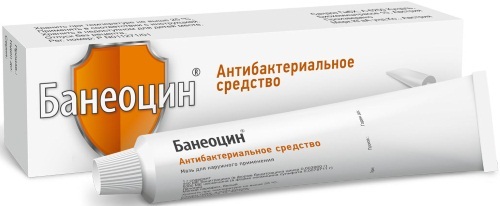
Indications for use:
- folliculitis;
- bacterial skin lesions;
- contagious impetigo;
- carbuncles, boils;
- periporite;
- focal skin infections;
- eczema;
- purulent hydradenitis;
- with skin transplant;
- staphylococcal sycosis;
- paronychia;
- trophic leg ulcers;
- diaper dermatitis;
- in cosmetic surgery.
Contraindications - intolerance to the components of the composition, a large area of skin lesions, heart and kidney failure. Cannot be used together with aminoglycosides for the treatment of eye infections. Possible side effects are allergic reactions, otoxicity and nephrotoxicity.
In pharmacies, they are sold without a prescription, the price is from 220 rubles.
"Tetracycline"
Produced in the form of an ointment in aluminum tubes. The main active ingredient is tetracycline hydrochloride.
The drug suppresses the protein synthesis of pathogens. Affects most gram-positive and negative bacteria. But Pseudomonas aeruginosa, fragilis, Proteus bacteria and serration are resistant to tetracycline. Most of the fungi and small viruses almost do not react to it.
The ointment is applied under the lower eyelid, on the mucous membrane, 3-5 times a day. The course of treatment is until complete recovery. Indications for use are eye diseases (conjunctivitis, trachoma, blepharitis).
Contraindications - children under 8 years old, pregnancy, fungal diseases or individual intolerance to the components of the composition. With caution - with renal pathologies. Possible side effects are allergic reactions, nausea, vomiting, decreased appetite.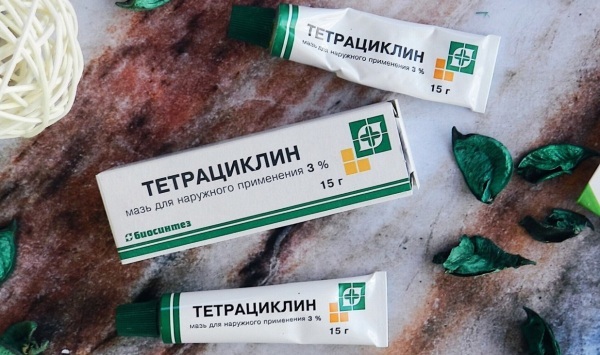
In pharmacies, they are sold without a prescription, the price is from 60 rubles.
Betadine
Produced in the form of a brown ointment with the smell of iodine. The main active ingredient is povidone iodine, additional ones are sodium bicarbonate, macrogol. The drug is bactericidal, affects most gram-positive and negative bacteria, viruses, most fungi.
The ointment is applied locally to the affected areas or injected into the vagina 1-2 times a day. The duration of treatment is a week. If necessary, therapy can be extended up to 14 days. There is no need to take a break during your period.
Indications for use:
- treatment of wounds after surgery;
- viral and fungal skin infection;
- trophic ulcers;
- diabetic foot;
- chronic or acute vaginitis;
- prevention of infections in dermatological diseases;
- bedsores;
- candidiasis;
- disinfection of mucous membranes, skin, birth canal.
Contraindications - hypersensitivity to iodine, thyroid malfunction, Dühring's dermatitis. Cannot be used for newborns, while using radioactive iodine. Possible side effects can occur with frequent use - in the form of allergic manifestations.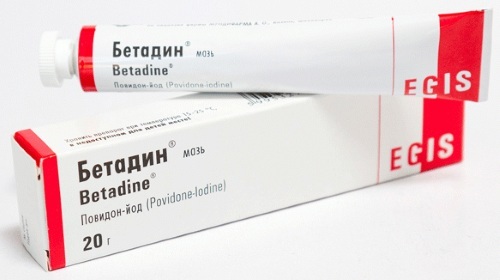
They are released without a prescription, the price is from 220 rubles.
"Gentamicin"
Produced in the form of an ointment. The main active ingredient is gentamicin. The drug is bactericidal, from the aminoglycoside group. Affects most gram-positive and negative bacteria. Penetrates through the membrane, inhibits protein synthesis.
The ointment is distributed in a thin layer 3-4 times a day. The duration of treatment is 7 days.
Indications:
- infectious and inflammatory processes;
- purulent lesions of soft tissues;
- pyoderma;
- furunculosis;
- seborrheic dermatitis, aggravated by infection;
- superficial folliculitis;
- paronychia;
- sycosis;
- secondary infection of the skin;
- varicose ulcers;
- burns;
- conjunctivitis.
Contraindications - intolerance to the components of the drug, pregnancy, impaired renal function, neuritis of the auditory nerve. Possible side effects are nausea, vomiting, anemia, or thrombocytopenia. Kidney failure, headaches, drowsiness, or allergic reactions may develop. Quincke's edema is rare.
Dispensed by prescription, the price is from 110 rubles.
"Bactroban"
Produced in the form of a white ointment. The main active substance is mupirocin, additional ones are macrogol, paraffin. The drug affects most gram-positive and negative bacteria. Slows down protein synthesis. When the drug is used in minimal doses, it acts as a bacteriostatic, in large doses, it is a bactericidal agent.
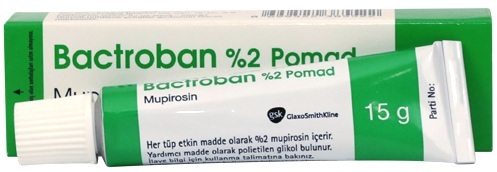
The ointment is applied to the affected areas three times a day. From above, you can fix it with a gauze bandage. The course of treatment is from 3-5 days to 10 days.
Indications for use - infection of the skin of a primary and secondary nature, prevention of bacterial complications due to cuts and wounds, nasal infection. Contraindications - allergic manifestations, renal failure. Possible side effects are dry skin, rash, swelling. But they are rare.
In pharmacies, prescription is available, the price is from 540 rubles.
Broad-spectrum antibiotic ointments act in several directions at once. They not only destroy bacteria and prevent their spread, but quickly stop inflammation. At the same time, they have an analgesic effect. They act quickly, but are applied in courses of 5 days or more.
Antibiotic ointment video
Broad-spectrum antibiotics:
